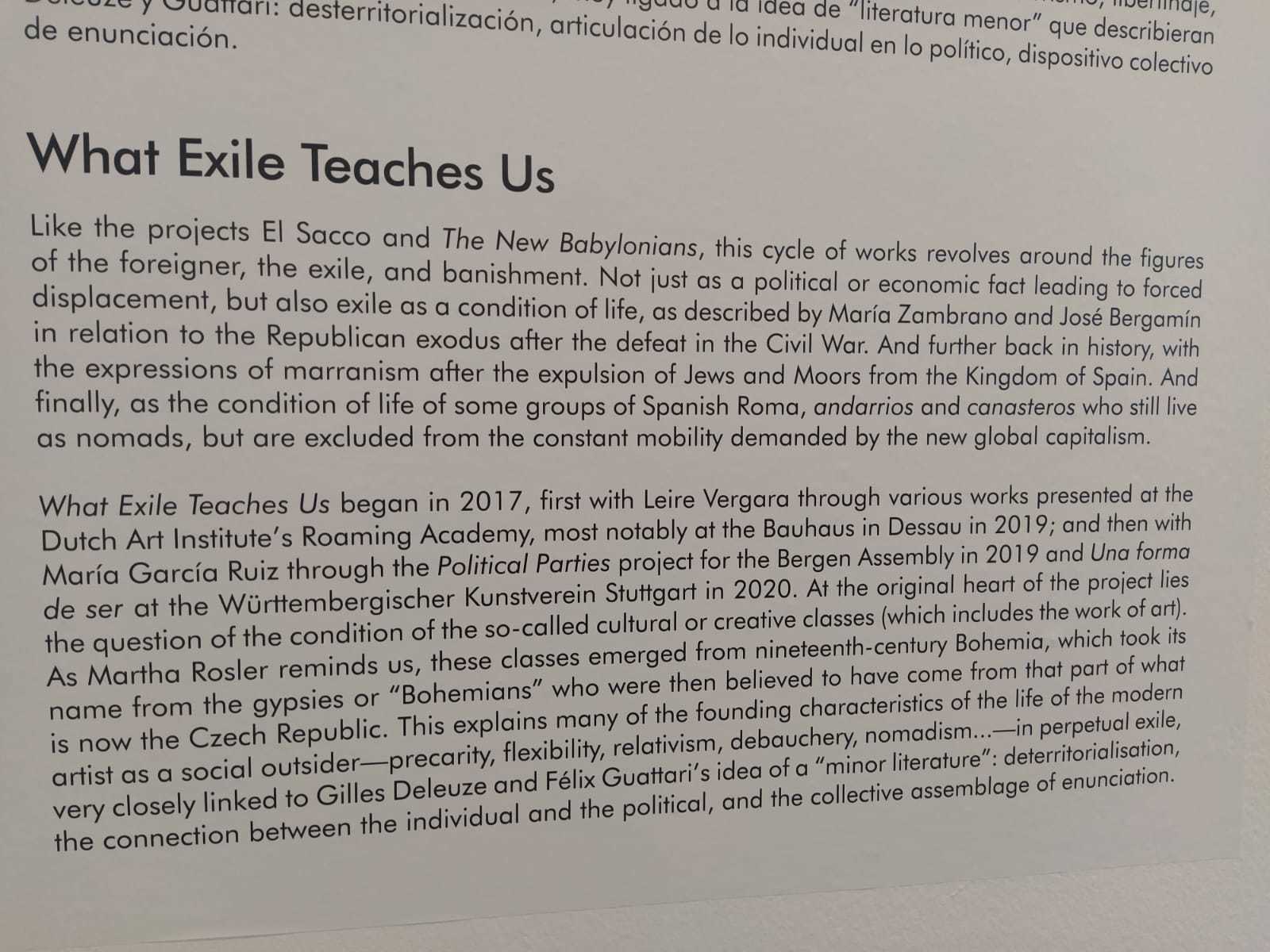DAI's Roaming Assembly#23 (which took place in the Bauhaus in Dessau and was convened by Leire Vergara and Pedro Romero) is referenced in an anthological exhibition which surveys Romero’s career. From his beginnings in the 1980s to his more recent investigations, with a selection of his most salient projects and the account they render of a multidisciplinary practice, the political and social context in which they were produced and the main themes forming the spine of his work. The exhibition Versifying Machines can be seen in the Museum Reina Sofia in Madrid till the 28 th of March, 2022.
Pedro G. Romero (Aracena, Huelva, 1964) is a researcher, curator and editor who has also worked as an artist since 1985. Since the late 1990s, his practice has centred on two vital instruments: Archivo F. X. and Máquina P.H., through which he propels the Independent Platform of Modern and Contemporary Flamenco Studies (PIE.FMC) in its primary aim of broadening flamenco’s field of study with tools originating from aesthetics, art history, visual studies and new considerations that surface, ranging from cultural studies to anthropology and sociology. Moreover, in relation to flamenco imagery and popular culture, Romero has put forward projects on a European level, for instance forma-de-vida (Way-of-Life), on art-making by flamenco figures, gypsies and Romany people for the Bergen Assembly in Norway and Kunstverein in Stuttgart.
Pedro G. Romero’s work analyses events in history, life and the circulation of images, sacramental iconography, the iconoclastic expression of avant-garde art movements in the 20th century and modern art, flamenco, popular culture concepts and imagery, the economy, cultural policies, forms of urban speculation, and so on. His indelible reflection on the ideological use and administration of images is articulated around a set of core questions: To whom and to what interests does the construction of the image, its visibility and invisibility in specific contexts, its appropriation, capitalisation and reappearance in time, respond? Which roles do cultural classes undertake as producers and/or reproducers of images inserted in contemporary artistic practice? What is the power or capacity for activation of the political management of these images in a cultural field that constantly redefines its agents, including the museum, as a space?
This anthological exhibition in the Museo surveys Romero’s career, from his beginnings in the 1980s to his more recent investigations, with a selection of his most salient projects and the account they render of a multidisciplinary practice, the political and social context in which they were produced and the main themes forming the spine of his work. The show includes the series ¿Llegaremos pronto a Sevilla? (Will We Reach Seville Soon? 1995–1999), El tiempo de la bomba (Time of the Bomb, 1993-1997), El almacén de las ideas (The Warehouse of Ideas, 1987–1990); emblematic projects like La sección áurea (The Golden Section, 1989–1992), Un mundo R.A.R.O. (A R.A.R.O. [Strange] World, 1990–1993), El fantasma y el esqueleto (The Ghost and the Skeleton, 1998–1999); and works which have participated in major shows, such as Magatzem d’idées (The Moncada Room of the “la Caixa” Foundation, Barcelona, 1988), Antes y después del entusiasmo 1972-1992 (Before and After Enthusiasm 1972–1992, KunstRain 89, Amsterdam 1989), and El sueño imperativo (The Imperative Dream, Círculo de Bellas Artes, Madrid, 1991).
Further, the exhibition includes a project made specifically for the occasion, Canciones de la guerra social contemporánea (Songs of the Contemporary Social War), a large-scale installation and set design conceived as a plaza and documentary space, and a place where different performances unfold and recover texts by Guy Debord, composed musically and adapted by Pedro G. Romero in collaboration with different composers and performers. This room in the exhibition will be performance-activated with live monthly recitals and will connect with a strand of the show that invites a re-reading of the body and its movements, tied to the concepts of work, popular culture and presence. By way of these actions, Romero advances questions to some of the artists that make up the extensive network of agents linked to the investigations of Máquina P.H., enabling him to work on the artistic direction of dancer Israel Galván and with Niño de Elche, Rocío Márquez and Tomás de Perrate, among others.
The show also provides insight into the curatorial role accompanying Pedro G. Romero’s practice and is formulated as an essay around the exhibition device which generates and shapes narratives via an association of works, documents and audiovisual materials.
https://www.museoreinasofia.es/en/exhibitions/pedro-g-romero

